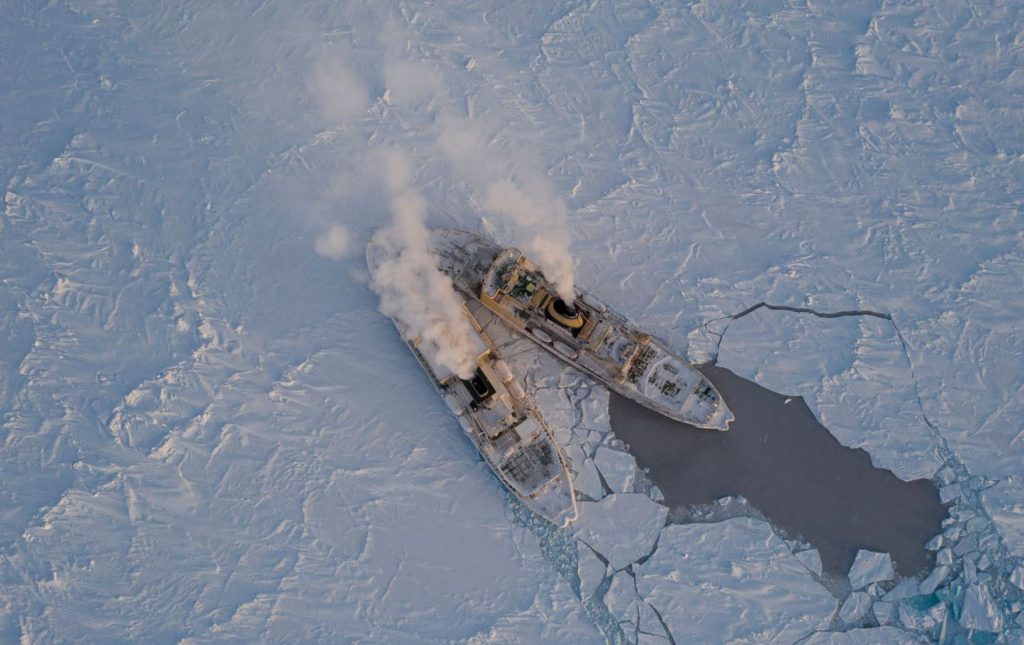MOSAiC Leg 3 – Part 1 of 5
by Julia Schmale
Literally, and figuratively, as we were to find out, the first phase of Leg 3 was a journey into the dark. After some initial training sessions and seminars, the team boarded the Russian icebreaker Kapitan Dranitsyn on 27 January in Tromsö. Given that the Dranitsyn is designed for breaking river ice, the sea state then did not allow us to leave the Fjord until six days later (see https://www.epfl.ch/labs/eerl/waiting-in-the-fjord/). This was the first lesson in patience, however, somewhat sweetened by northern lights and a beautiful view.
The passage over the open ocean was rough, but we reached the marginal ice zone (MIZ) relatively quickly and progress was promising. As soon as we hit the ice, we were far north enough to experience complete darkness. An ice watch schedule was established to observe the ice situation from the bridge every hour. This was quite instructive for many of us who normally do not work on sea ice per se. We witnessed landscapes of pancake ice, long stretches of newly formed ice decorated with frost flowers and enough open water to smoothly move forward (see https://www.epfl.ch/labs/eerl/a-winter-sea-of-ice/).
That changed abruptly as soon as the ice reached a concentration of 100 % and was under pressure. Our progress slowed enormously from roughly 500 km per day to 20 km or so. This was around 10 February after almost 2 weeks on board and still 500 km to go.
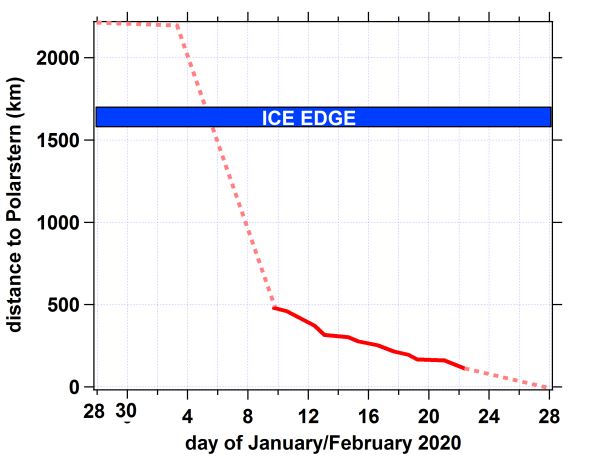
Speaking from a general perspective, going to 88 °N in February is not a normal undertaking, and one should not expect fast progress. After all it was in the middle of winter and not too far from the sea ice maximum in March. However, modern satellite imagery and sea ice observer knowledge should make it possible to find lead systems through the ice to advance further north.
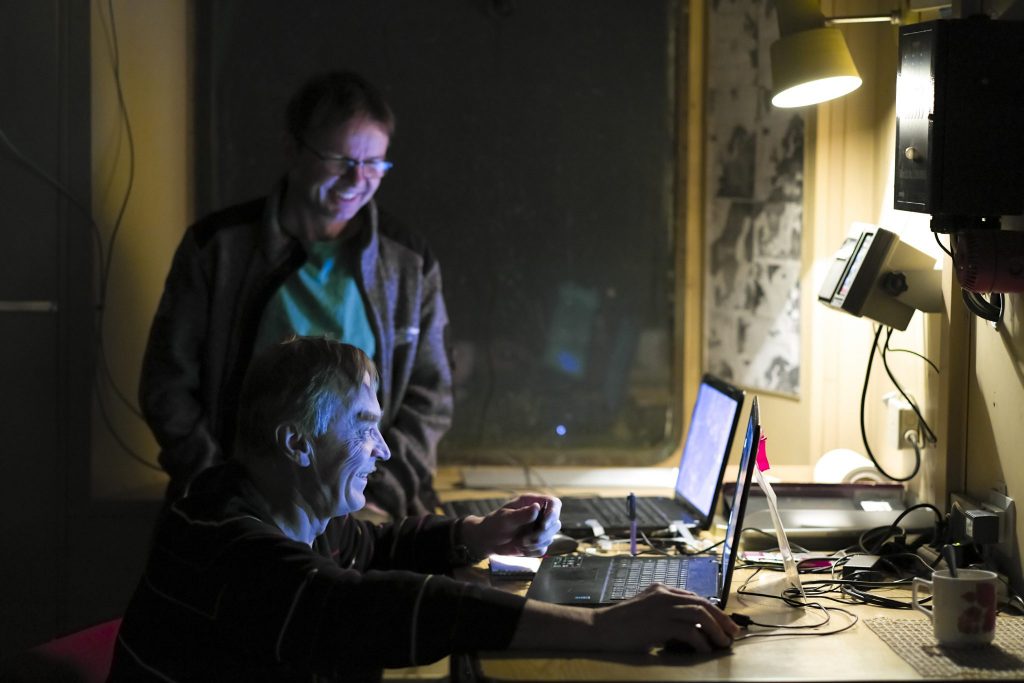
All trust given in the available information, concerns came up after a few days of very slow progress whether reaching our destination Polarstern was at all possible given the available fuel and food. At times, Polarstern drifted away from our position as much as or even more than we advanced, hitting a record of 88.6°N. Never before had a ship reached further north during Arctic winter.
The uncertainty of whether we would at all get to do our research or not was a tough experience, after having spent the first weeks of our journey to build our teams and talk through the scientific work and coordination in detail (see https://www.epfl.ch/labs/eerl/what-do-you-actually-do-during-a-multi-week-transit/). Motivation to work on the ice was very high after that preparation.
A number of alternative exchange scenarios were designed, including exchange by helicopters from Kapitan Dranitsyn to Polarstern and vice versa. At that time, this seemed to be one of the most feasible scenarios, because outside help was difficult to organize. The important caveat of this scenario was, however, that due to darkness and weather conditions, such an exchange might have taken weeks, and in the worst case, not everybody might have been exchanged. On top of this, we saw the light returning, around 23 February, which created a further sense of urgency to finally reach our destination. This nagging uncertainty made it a difficult journey, not only for us, but also the leg 2 team who did not know whether they would be able to leave or whether they would have to wait for the next occasion to be exchanged. Even the record the Dranitsyn had set for the most northerly position, i.e. 88.47 °N, on 26 February to be reached by a vessel with her own power that early in the year was no relief. The positive effect of this experience was however that it created a very strongly bonded team out of all of us, a trait that we were going to need in the not too far future…
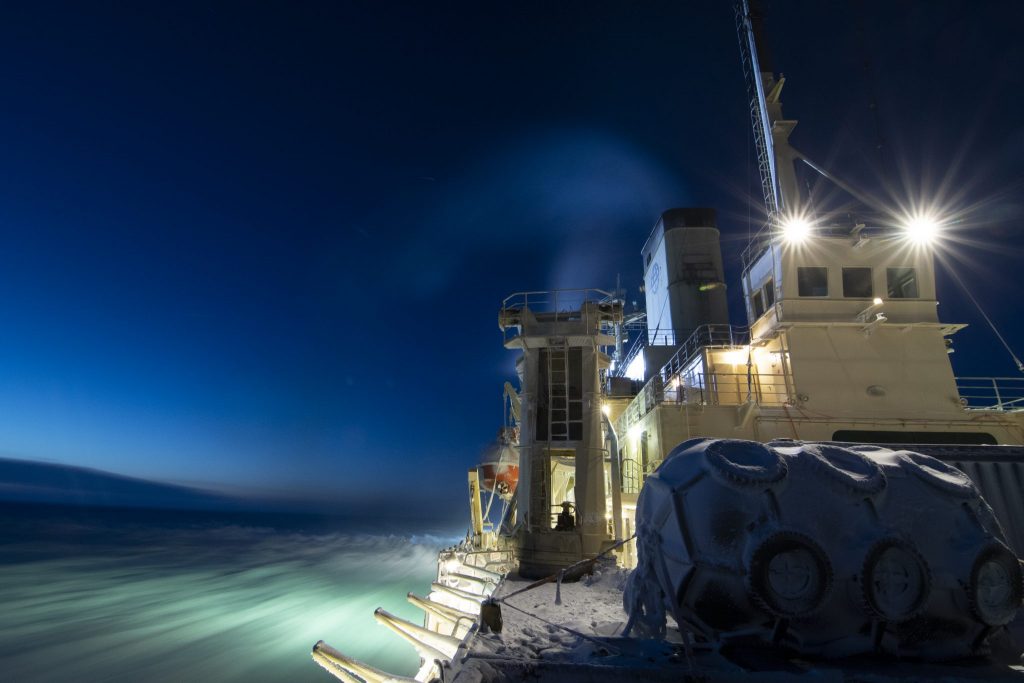
After 32 days, finally, the lights of Polarstern were visible on the horizon. Then it still took a couple more days to arrive at the MOSAiC floe navigating through a network of buoys and other scientific installations.
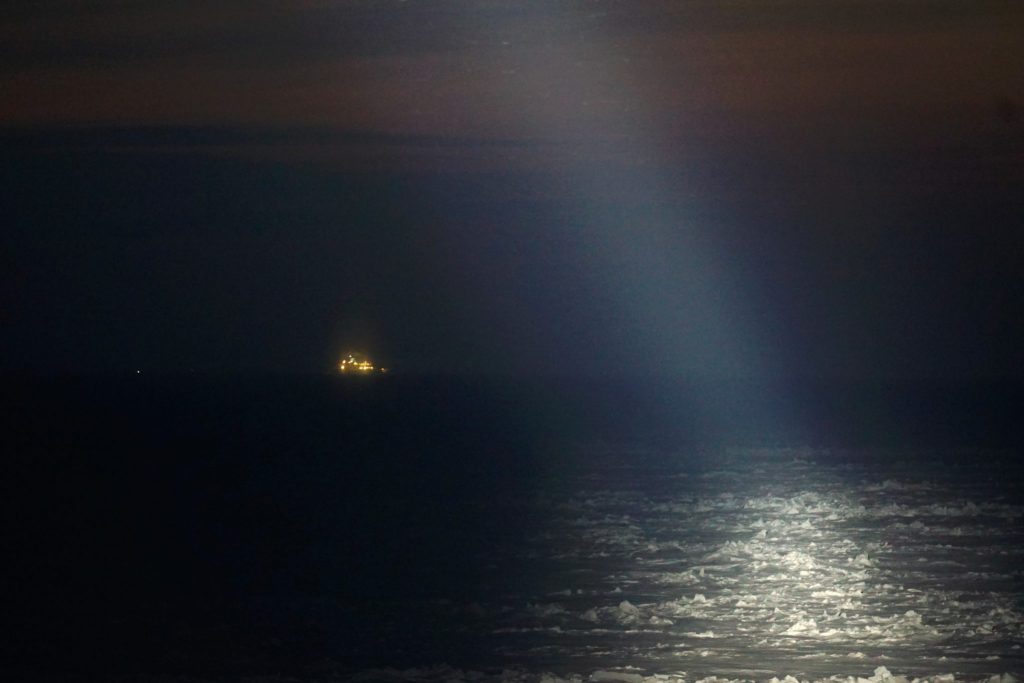
From 29 February onwards, the scientific handover could take place, almost like in the ideal scenario with the ships more or less alongside. We also got about a week of time. So many days were unplanned, but temperatures plummeted to -40°C, which made it impossible to operate certain equipment such as the ships’ cranes. Those were however necessary for food resupply and other heavy material shuffling.
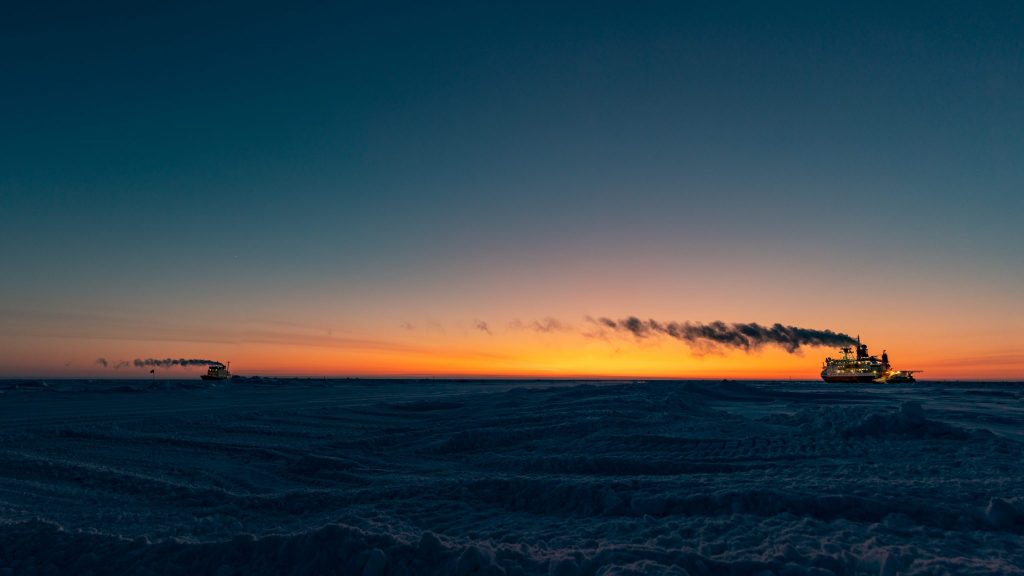
Now the fuel situation of Kapitan Dranitsyn still had to be solved, because the journey towards Polarstern had much greater energy needs than anticipated. The solution was that another Russian icebreaker, Admiral Makarov, would meet the outgoing party as far north as possible for refueling and a joint journey back. After all, the exchange between leg 2 and 3 worked out. Our science team took over Polarstern and the Central Observatory on the ice on 5 March 2020, the leg 2 team left on 6 March and reached Tromsö on 31 March 2020.
